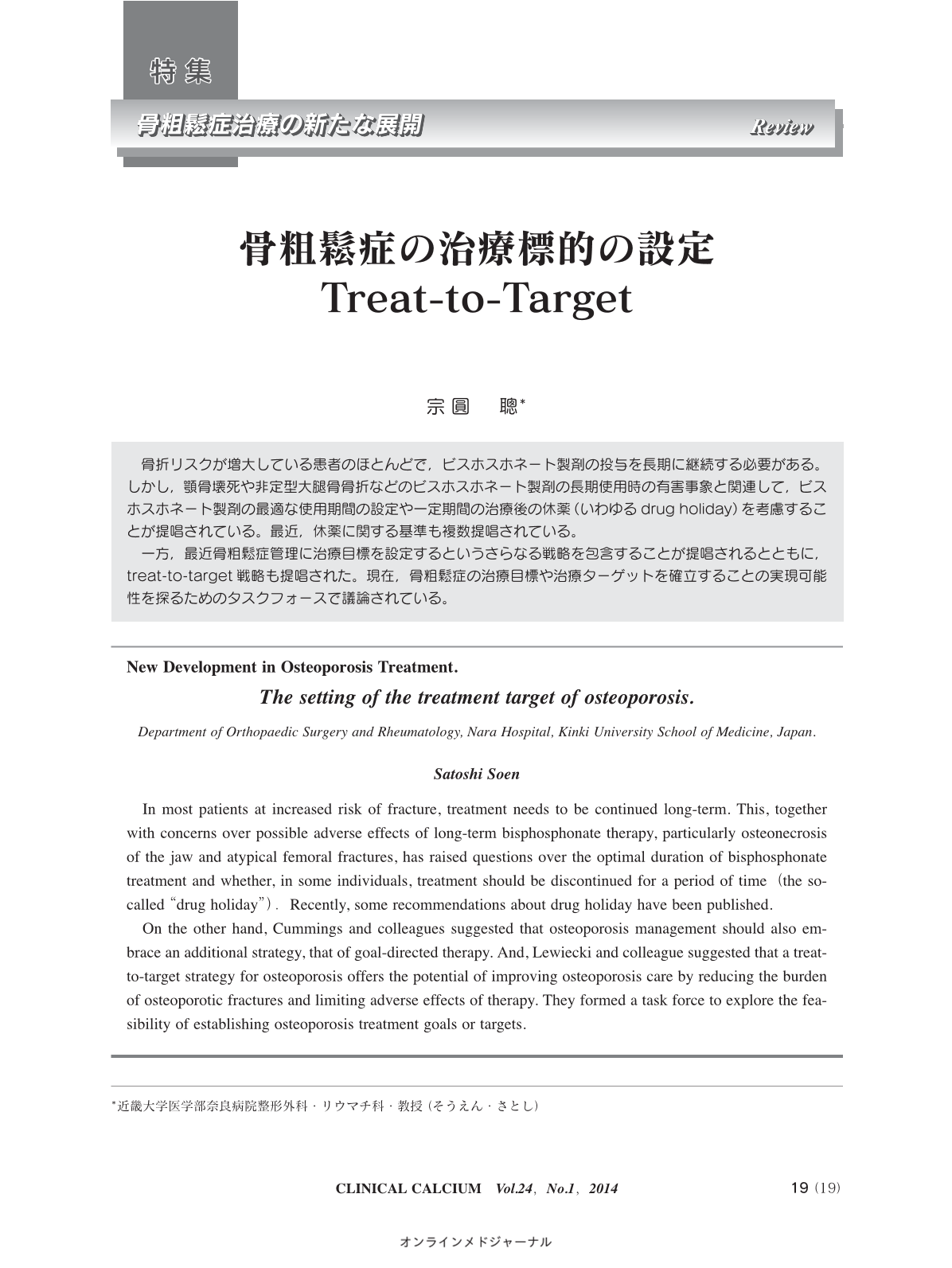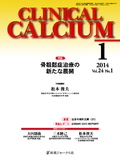Japanese
English
- 有料閲覧
- Abstract 文献概要
- 1ページ目 Look Inside
- 参考文献 Reference
骨折リスクが増大している患者のほとんどで,ビスホスホネート製剤の投与を長期に継続する必要がある。しかし,顎骨壊死や非定型大腿骨骨折などのビスホスホネート製剤の長期使用時の有害事象と関連して,ビスホスホネート製剤の最適な使用期間の設定や一定期間の治療後の休薬(いわゆるdrug holiday)を考慮することが提唱されている。最近,休薬に関する基準も複数提唱されている。 一方,最近骨粗鬆症管理に治療目標を設定するというさらなる戦略を包含することが提唱されるとともに,treat-to-target戦略も提唱された。現在,骨粗鬆症の治療目標や治療ターゲットを確立することの実現可能性を探るためのタスクフォースで議論されている。
In most patients at increased risk of fracture, treatment needs to be continued long-term. This, together with concerns over possible adverse effects of long-term bisphosphonate therapy, particularly osteonecrosis of the jaw and atypical femoral fractures, has raised questions over the optimal duration of bisphosphonate treatment and whether, in some individuals, treatment should be discontinued for a period of time(the so-called“drug holiday”).Recently, some recommendations about drug holiday have been published. On the other hand, Cummings and colleagues suggested that osteoporosis management should also embrace an additional strategy, that of goal-directed therapy. And, Lewiecki and colleague suggested that a treat-to-target strategy for osteoporosis offers the potential of improving osteoporosis care by reducing the burden of osteoporotic fractures and limiting adverse effects of therapy. They formed a task force to explore the feasibility of establishing osteoporosis treatment goals or targets.



